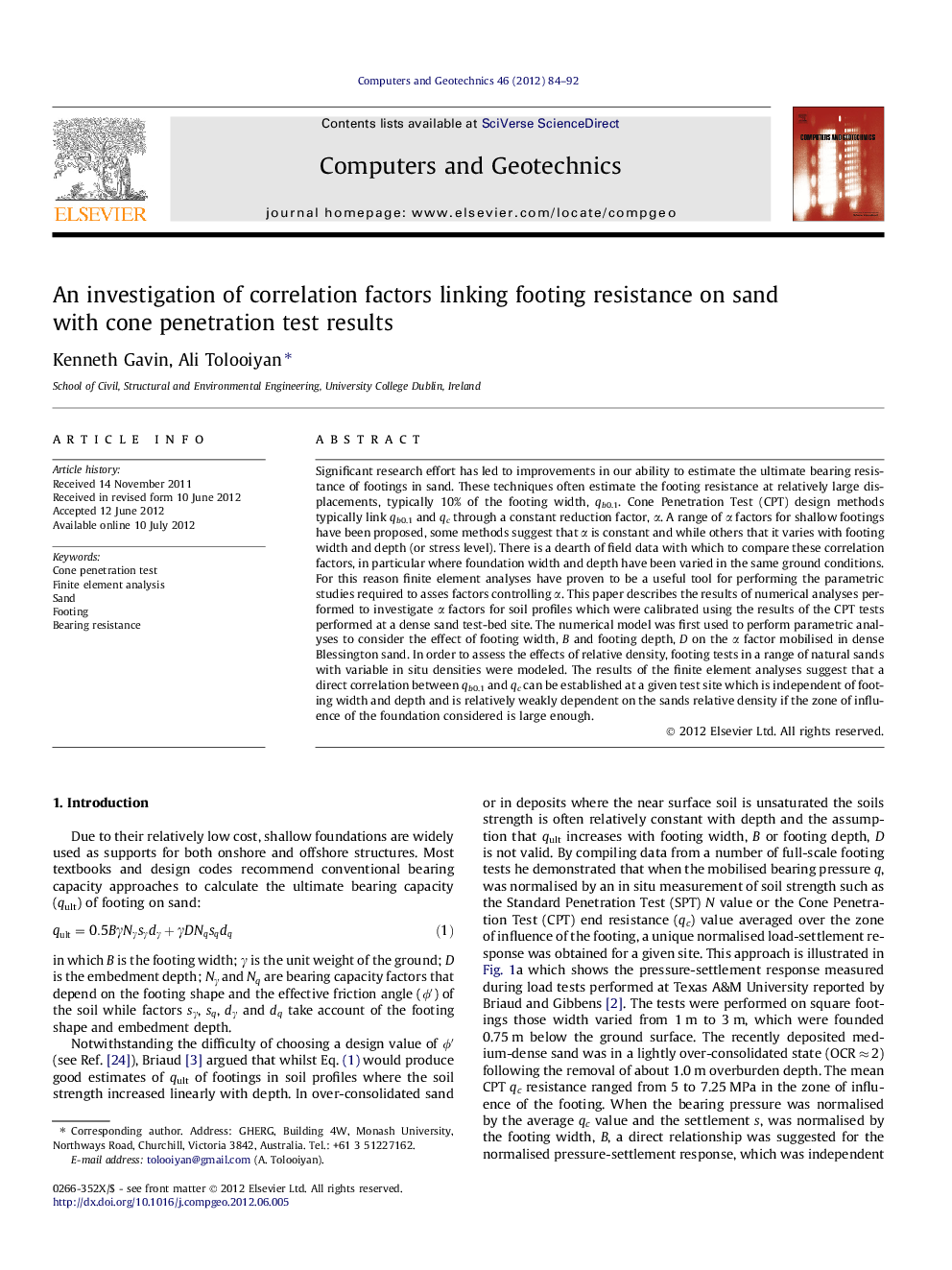| کد مقاله | کد نشریه | سال انتشار | مقاله انگلیسی | نسخه تمام متن |
|---|---|---|---|---|
| 255007 | 503342 | 2012 | 9 صفحه PDF | دانلود رایگان |

Significant research effort has led to improvements in our ability to estimate the ultimate bearing resistance of footings in sand. These techniques often estimate the footing resistance at relatively large displacements, typically 10% of the footing width, qb0.1. Cone Penetration Test (CPT) design methods typically link qb0.1 and qc through a constant reduction factor, α. A range of α factors for shallow footings have been proposed, some methods suggest that α is constant and while others that it varies with footing width and depth (or stress level). There is a dearth of field data with which to compare these correlation factors, in particular where foundation width and depth have been varied in the same ground conditions. For this reason finite element analyses have proven to be a useful tool for performing the parametric studies required to asses factors controlling α. This paper describes the results of numerical analyses performed to investigate α factors for soil profiles which were calibrated using the results of the CPT tests performed at a dense sand test-bed site. The numerical model was first used to perform parametric analyses to consider the effect of footing width, B and footing depth, D on the α factor mobilised in dense Blessington sand. In order to assess the effects of relative density, footing tests in a range of natural sands with variable in situ densities were modeled. The results of the finite element analyses suggest that a direct correlation between qb0.1 and qc can be established at a given test site which is independent of footing width and depth and is relatively weakly dependent on the sands relative density if the zone of influence of the foundation considered is large enough.
Journal: Computers and Geotechnics - Volume 46, November 2012, Pages 84–92